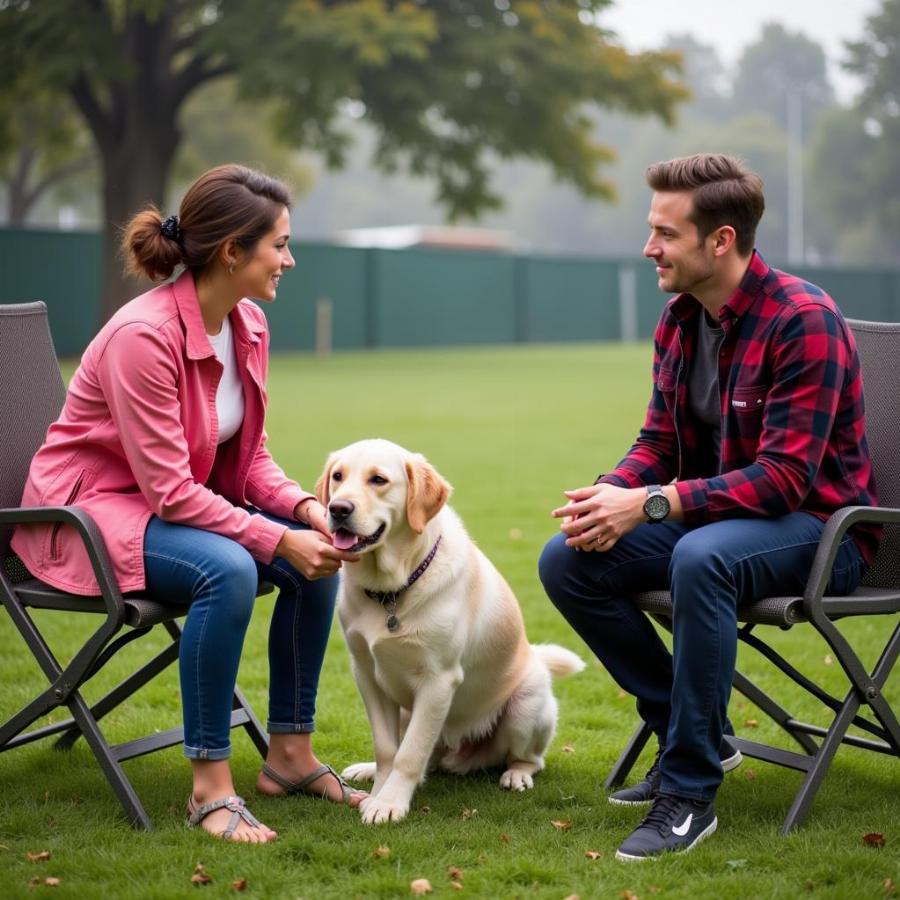Boarding and training dogs is a popular option for owners seeking professional help with their canine companions. Whether you’re dealing with behavioral issues, want to teach your dog new skills, or simply need a reliable place for them to stay while you’re away, combining boarding and training can be an effective solution. This comprehensive guide will explore the benefits, considerations, and essential tips for choosing the right boarding and training program for your beloved furry friend.
Understanding the Benefits of Boarding and Training Dogs
Why choose combined boarding and training instead of separate services? The integrated approach offers several key advantages. Firstly, it provides a consistent learning environment. Your dog receives daily training in a structured setting, promoting faster progress and better retention. Secondly, it addresses behavioral issues effectively. Trainers can observe and address problem behaviors in real-time within the boarding environment, providing tailored solutions. Finally, it offers convenience and peace of mind. You can enjoy your time away knowing your dog is not only safe and well-cared for but also learning valuable skills.
Choosing the Right Boarding and Training Program for Your Dog
Selecting the right program is crucial for your dog’s success and well-being. Consider these essential factors. Trainer qualifications: Look for certified trainers with experience in the specific areas you want to address, such as obedience, agility, or behavioral modification. Program structure: Inquire about the training methods used, the frequency of sessions, and the level of individual attention your dog will receive. Facility environment: Visit the facility and assess its cleanliness, safety, and overall atmosphere. Ensure the kennels are spacious, well-ventilated, and provide ample opportunities for exercise and socialization. Customization: A good program should tailor its approach to your dog’s individual needs, breed, age, and temperament.
 Choosing the Right Dog Training Program
Choosing the Right Dog Training Program
What to Expect During the Boarding and Training Process
Once you’ve enrolled your dog in a program, understanding the process can ease your anxieties and prepare you for what to expect. Typically, the program begins with an initial assessment where the trainer evaluates your dog’s current skills and behavior. This assessment helps determine the most appropriate training plan. Throughout the program, you should receive regular updates on your dog’s progress, including reports, videos, or even live observation sessions. Upon completion of the program, the trainer will provide you with detailed instructions on how to maintain and reinforce the newly learned skills at home.
Is Boarding and Training Right for Your Dog?
Boarding and training isn’t a one-size-fits-all solution. Consider your dog’s personality, age, and specific needs. Is your dog comfortable in new environments? Do they thrive in structured settings? Are they motivated by learning new things? Answering these questions can help you determine if this approach is the right fit.
Tips for a Smooth Transition
A smooth transition can minimize stress for both you and your dog. Pack familiar items, such as your dog’s favorite toys, blanket, and bed, to create a sense of comfort. Maintain a positive and reassuring attitude when dropping off your dog. Avoid prolonged goodbyes, which can increase anxiety. Stay in touch with the trainer for updates and communicate any concerns you may have.
Conclusion
Boarding and training dogs can be a transformative experience, providing valuable skills, addressing behavioral issues, and offering convenience for busy owners. By carefully researching programs, considering your dog’s individual needs, and ensuring a smooth transition, you can set your furry friend up for success and strengthen the bond you share.
FAQ
- What is the typical duration of a boarding and training program? Programs can range from a few weeks to several months, depending on the dog’s needs and the goals of the training.
- How much does boarding and training cost? Costs vary based on the program’s length, the facility’s location, and the trainer’s expertise.
- Can I visit my dog during the boarding and training period? Policies vary between facilities. Some allow regular visits, while others prefer to minimize disruptions to the training process.
- What if my dog has special dietary needs or medical conditions? Reputable facilities will accommodate special needs, provided you provide clear instructions and necessary supplies.
- What happens after the boarding and training program is complete? Trainers will provide you with a detailed plan for maintaining and reinforcing your dog’s newly learned skills at home.
Do you want to learn more about dog care?
Check out these related articles on Beaut Dogs:
Beaut Dogs is your one-stop resource for all things dog-related, offering expert advice, helpful tips, and a wealth of information on various dog breeds and their care. When you need assistance, reach out to us via Email at [email protected] for detailed and accurate answers from Beaut Dogs. We’re committed to helping you provide the best possible care for your canine companion.